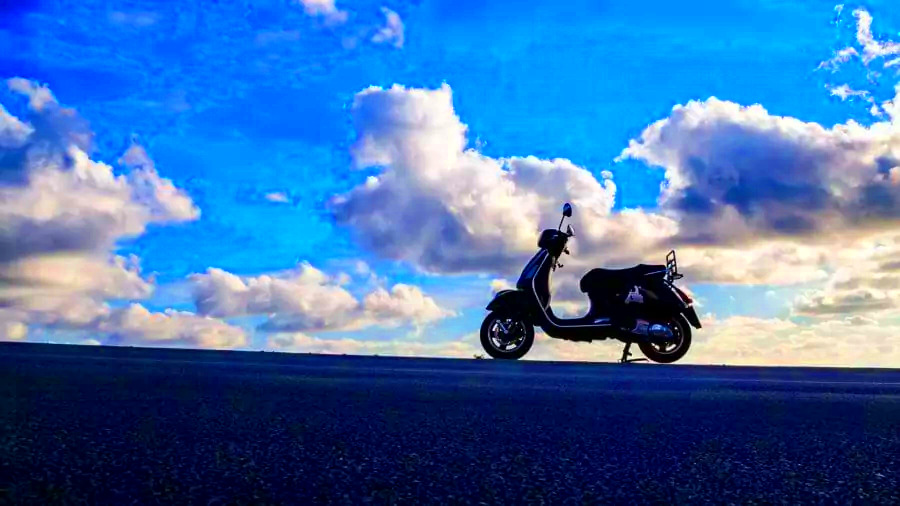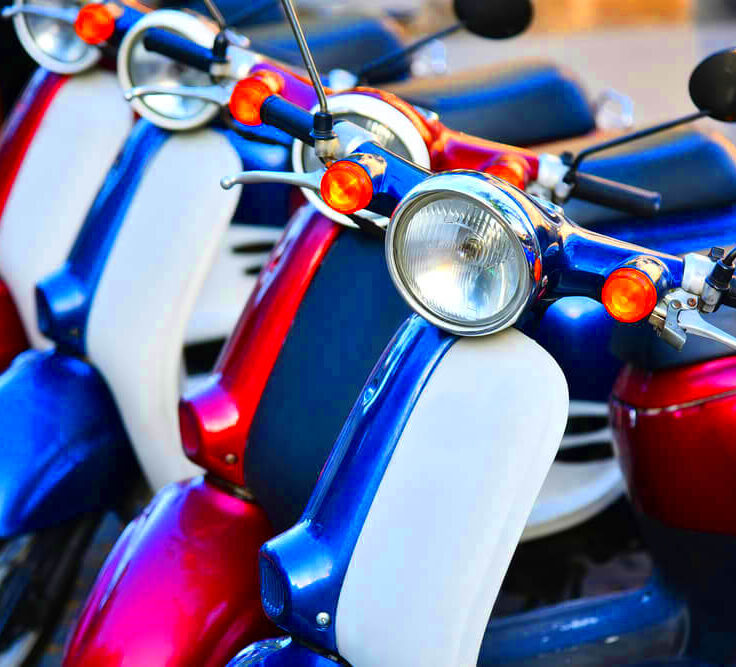Key Aspects of Indiana Moped Laws
Indiana has specific laws governing the use of mopeds to ensure the safety of riders and others on the road. Mopeds, though small in size and speed, still require adherence to the rules set by the state. Knowing these laws is essential for riders to avoid legal issues and ensure safe driving. In this post, we will break down the key aspects of moped laws in Indiana, starting from the basic definitions to the requirements for licensing, registration, and safety. Whether you’re new to riding or just need a refresher, understanding these laws is crucial for staying compliant on the road.
Definition of a Moped in Indiana

In Indiana, a moped is defined based on specific criteria regarding its engine size, speed, and overall design. Here’s what qualifies as a moped in the state:
- Engine Size: A moped must have an engine size that does not exceed 50 cubic centimeters (cc).
- Speed Capacity: Mopeds are not allowed to go faster than 25 miles per hour on level ground.
- Pedal Function: In some cases, mopeds may have functional pedals that allow for manual operation, but this is not mandatory under Indiana law.
- Design: Mopeds must be designed for use on public roads but are generally lighter and slower compared to motorcycles or scooters.
It’s important to note that vehicles exceeding these specifications would no longer be classified as mopeds and may fall under different legal categories, such as motorcycles or motor-driven cycles.
Types of Mopeds and Classification

In Indiana, mopeds are classified into different categories based on their engine power and capabilities. These classifications help determine the type of license required and the specific rules each category must follow. The main types of mopeds include:
- Class A Mopeds: These mopeds have a maximum engine size of 50cc and are allowed on public roads but must not exceed speeds of 25 mph. Class A mopeds require registration, and the rider must have a valid driver’s license or learner’s permit.
- Class B Mopeds: Mopeds with slightly higher power, which can exceed 25 mph but are still under the legal definition of a moped. These vehicles require more stringent licensing and insurance compared to Class A mopeds.
- Electric Mopeds: While not powered by gasoline engines, electric mopeds still fall under the same rules as gas-powered ones, depending on their top speed and motor output.
Each classification comes with its own set of rules, and it’s important for riders to ensure they meet all requirements for their specific type of moped.
Licensing Requirements for Moped Riders
In Indiana, moped riders must meet certain licensing requirements to legally operate their vehicle on public roads. The type of license you need depends on the classification of the moped you are riding. Ensuring you have the correct license is critical to avoid penalties and ensure you’re covered under state law.
Here are the licensing requirements based on moped type:
- Class A Mopeds: Riders must hold a valid Indiana driver’s license or learner’s permit. This means you must meet the same standards as regular vehicle drivers, including passing a written test and vision exam. If you hold a learner’s permit, you must follow the restrictions associated with it, such as not riding at night or on highways.
- Class B Mopeds: For higher-powered mopeds, riders are required to have a motorcycle endorsement on their driver’s license. This involves completing a motorcycle safety course or passing a skills test. These mopeds are considered closer to motorcycles in terms of road performance, hence the need for additional licensing.
- Electric Mopeds: Riders of electric mopeds generally follow the same licensing rules as those for Class A mopeds, but it is essential to verify with local authorities as regulations can vary slightly based on the electric model’s power.
Riders under 18 must also wear a helmet at all times, regardless of the type of moped. Being aware of these licensing rules will help ensure you are riding legally and safely in Indiana.
Registration and Insurance Requirements
In Indiana, mopeds must be properly registered with the Bureau of Motor Vehicles (BMV), and in some cases, insurance is required. Registering your moped is a crucial step to making sure it’s recognized as a legal vehicle on the road, and insurance helps protect you in case of an accident.
Here’s what you need to know about moped registration and insurance:
- Registration: All Class A and Class B mopeds must be registered with the Indiana BMV. The registration process involves submitting proof of ownership, such as a bill of sale, and paying a small registration fee. Once registered, the moped will be assigned a license plate, which must be displayed on the vehicle at all times.
- Insurance: While Class A mopeds are not always required to have insurance, Class B mopeds typically require liability insurance. The insurance protects against damages or injuries in case of an accident. It is important to check with your insurance provider to confirm if your moped requires coverage and what policies are available.
Failing to register your moped or maintain proper insurance, if required, can result in fines or the impounding of your vehicle. Keeping your documents up to date ensures you are in compliance with state regulations.
Speed Limits and Road Restrictions for Mopeds
Indiana moped laws also set clear rules about where mopeds can be ridden and the speed limits they must follow. These restrictions are designed to keep both moped riders and other road users safe, as mopeds are generally slower and less powerful than other motor vehicles.
Here are the key speed limits and road restrictions for mopeds:
- Speed Limits: Class A mopeds are limited to a top speed of 25 miles per hour on public roads. Exceeding this limit can result in a traffic violation and possibly lead to the vehicle being reclassified as a motorcycle, which requires additional licensing and insurance. Class B mopeds may have higher speed limits, but this will depend on their power and the specific road they are on.
- Road Restrictions: Mopeds are generally not allowed on highways or interstates in Indiana. These roads are designed for faster, more powerful vehicles, and mopeds are not equipped to handle the speeds or traffic conditions safely. Riders must stick to local streets and roads where their slower speeds are more manageable.
- Bike Lanes: Mopeds are typically not allowed to use bike lanes unless specifically designated. These lanes are reserved for bicycles, and moped use could pose a safety hazard to cyclists.
By adhering to these speed limits and road restrictions, moped riders can ensure they are following the law and staying safe while riding. Always be mindful of local signs and road rules, as these may vary slightly depending on your location.
Safety Gear and Helmet Laws
Riding a moped in Indiana comes with certain safety gear requirements to protect both the rider and other road users. Wearing the right gear not only helps prevent serious injuries but also ensures you’re compliant with state laws. Although mopeds may seem less dangerous than larger motorcycles, accidents can still happen, making safety gear essential.
Here’s what you need to know about Indiana’s safety gear and helmet laws:
- Helmet Requirements: In Indiana, all moped riders under the age of 18 are required to wear a helmet at all times, regardless of the type of moped. The helmet must meet Department of Transportation (DOT) safety standards. Even though riders over 18 are not legally required to wear a helmet, it’s highly recommended for safety.
- Eye Protection: Riders under 18 must also wear protective eyewear unless the moped is equipped with a windshield. Eye protection can include safety glasses or goggles that shield the eyes from wind, debris, and insects.
- Additional Protective Gear: While not legally required, wearing gloves, jackets, and long pants can offer extra protection in case of an accident. Many experienced riders choose to wear this gear for added safety.
Choosing to wear proper safety gear is a smart decision, regardless of your age. Following the helmet and safety gear laws not only helps you avoid fines but also keeps you safer on the road.
Penalties for Violating Moped Laws
Indiana enforces penalties for violating moped laws to ensure public safety. These penalties can range from fines to more severe consequences, depending on the nature of the violation. Being aware of these penalties is key to staying compliant and avoiding unnecessary legal trouble.
Here are some common violations and their associated penalties:
- Failure to Register or Insure: If a moped that requires registration or insurance is found without it, the rider may face fines and the possible impounding of the vehicle. Registration violations typically result in fines ranging from $50 to $250.
- Riding Without a License: Operating a moped without the proper license can result in fines and, in some cases, criminal charges. If a rider is caught without the required license or learner’s permit, they could face fines between $150 and $500, depending on the situation.
- Speeding or Road Violations: Exceeding the speed limit or riding on restricted roads can lead to traffic citations, points on your driving record, and fines. Repeated violations may result in the suspension of your license.
- Helmet and Gear Violations: Riders under 18 caught without a helmet may receive a fine, and if involved in an accident, they may face higher insurance penalties or liabilities.
Penalties can increase for repeat offenses, and in some cases, you may face suspension of your driving privileges. Being aware of the laws and following them can save you from these consequences and ensure a safe riding experience.
FAQs About Indiana Moped Laws
Below are some frequently asked questions regarding moped laws in Indiana to help clear up any confusion.
- Do I need a license to ride a moped in Indiana? Yes, riders must hold either a valid driver’s license or a learner’s permit, depending on the classification of the moped. Class B mopeds may also require a motorcycle endorsement.
- Is insurance mandatory for mopeds? Insurance is required for Class B mopeds, but Class A mopeds may not require it. However, it’s advisable to have insurance for protection in case of accidents.
- Are helmets required for all riders? Helmets are required for all riders under 18. Although not mandatory for adults, wearing a helmet is highly recommended for safety.
- Can I ride a moped on the highway? No, mopeds are generally not allowed on highways or interstates due to their low speeds and inability to handle high-traffic conditions.
- What happens if I don’t register my moped? Riding an unregistered moped can result in fines and possible impounding of the vehicle. Registration is required for most mopeds in Indiana.
These FAQs cover the basics of moped laws in Indiana, but it’s always a good idea to stay updated on any changes to the regulations.
Conclusion on Indiana Moped Laws
Understanding and following Indiana’s moped laws are crucial for ensuring a safe and lawful riding experience. From licensing and registration to helmet requirements and road restrictions, these laws are in place to protect both moped riders and others on the road. Staying informed about the specific regulations for your moped type will help you avoid penalties and maintain safety. Always be mindful of local traffic rules, wear the recommended safety gear, and keep your documents up to date to enjoy a smooth and responsible ride.


